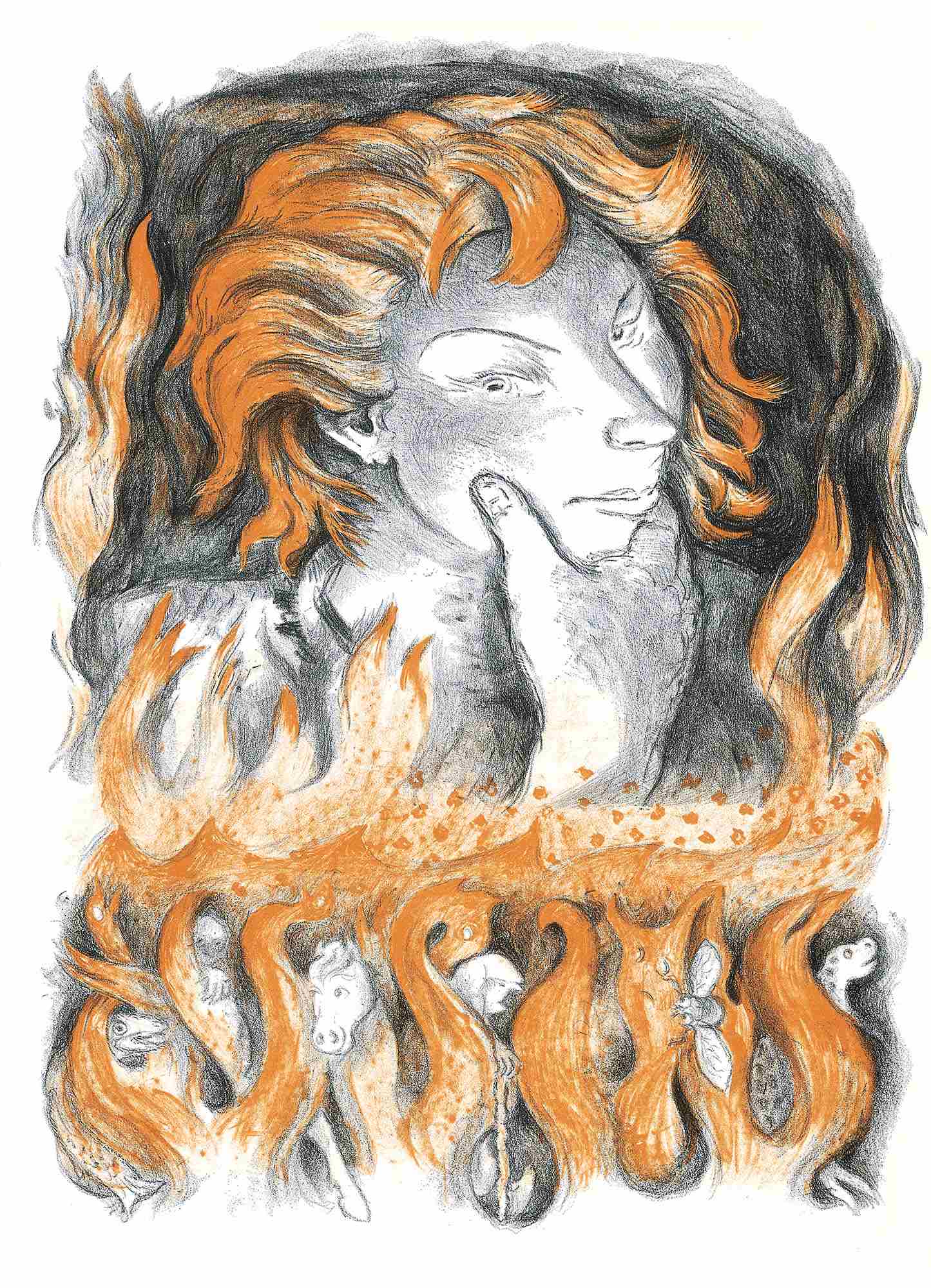
WHEN Odin was still young—before he had hanged himself on Yggdrasil and drunk from the Well of Wisdom—his eyes had fallen on a jotun named Loki. He was graceful and handsome, not uncouth and misshapen like most of his race. Many jotuns could change themselves into wolves or eagles, but Loki could take on any shape he wished, even female ones. Nimble-witted and bright, full of clever ideas, Loki was like a flickering, shining flame, and Odin was so taken with him that he asked him to be his blood brother. Loki gladly accepted the offer. So each cut a small vein in his arm and, letting their blood flow together, they solemnly swore to be as true brothers from then on. They would stand by each other, defend each other, and never accept a favor unless it was also offered to the other.
Thus Loki, the jotun, became one of the Aesir and moved up to Asgard, where the great and holy ones welcomed him. Thor especially liked to have cunning Loki at his side, for Thor was not quite as quickthinking as he was fast-acting. Loki helped him out of many a scrape, but he also got him into some.
Odin gave Loki one of the goddesses, Sigunn, for his wife. She was loving and kind and very patient with her fickle husband. But in Jotunheim, Loki had another wife, the dreadful ogress Angerboda. She was a better match for him, for, as the Aesir soon found out, Loki was really vicious and spiteful. He loved to play mean tricks, and it didn’t matter to him whom he tricked. Neither Aesir nor jotuns could trust him, and he was always causing trouble.
But Loki was so quick-witted and honey-tongued that the Aesir always forgave him his misdeeds. Besides, Odin’s blood flowed in his veins and no one dared to harm him.
